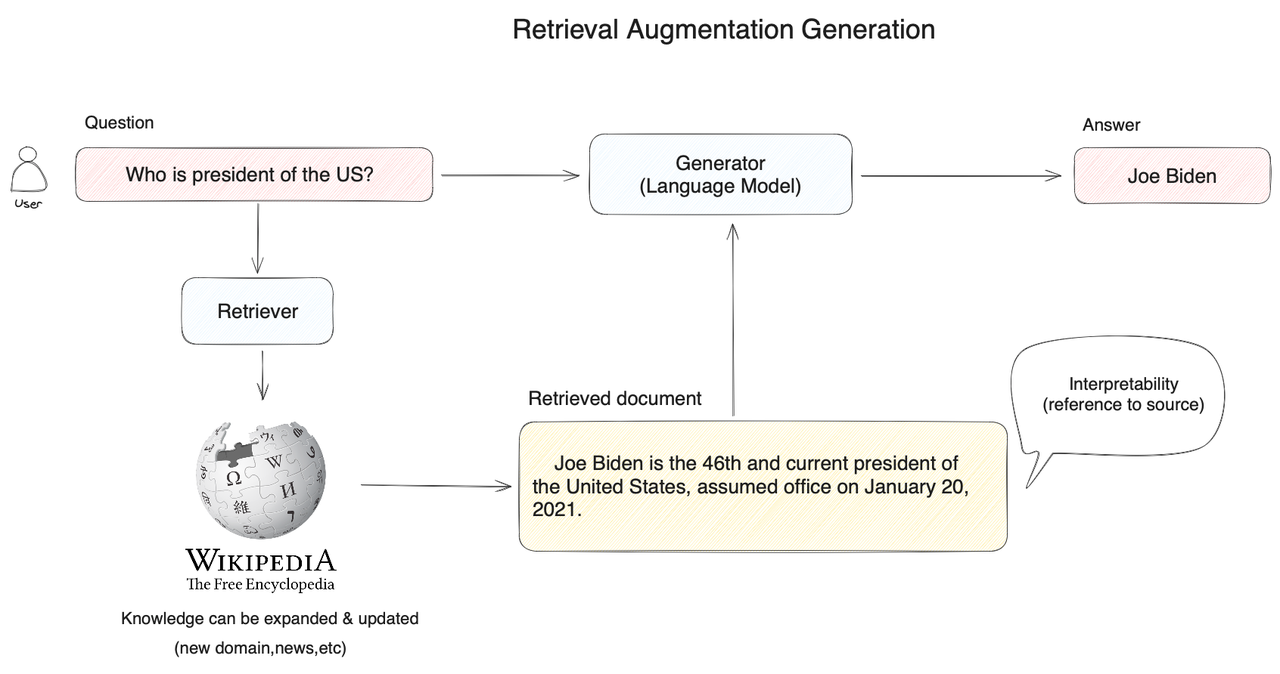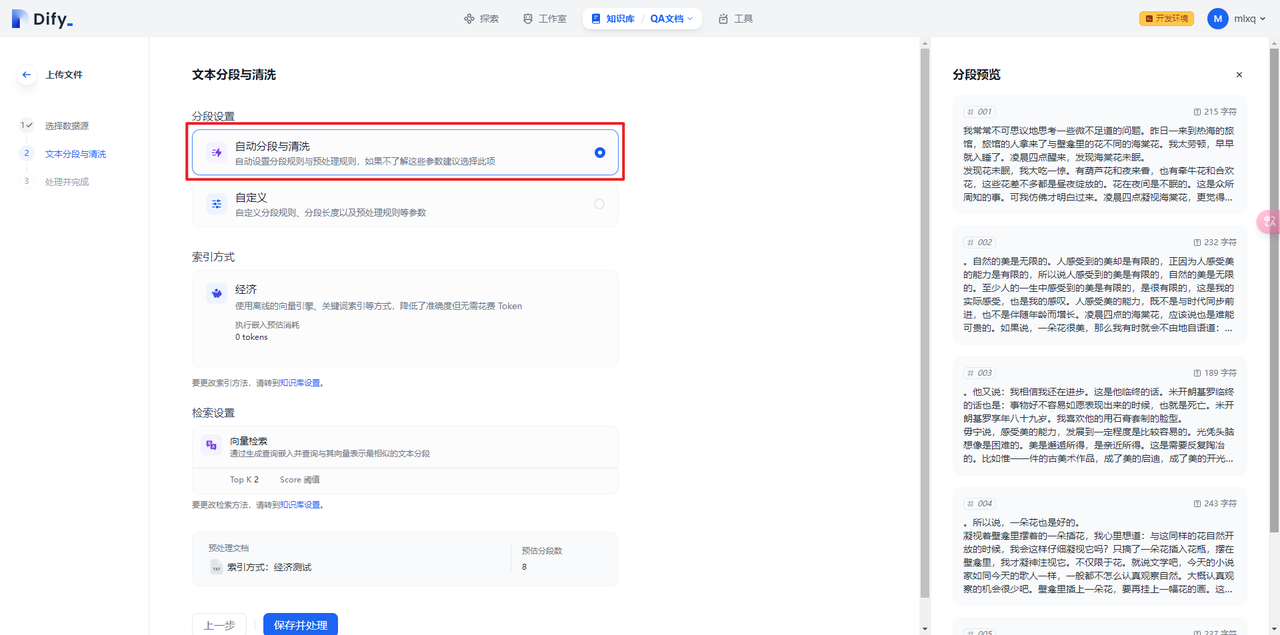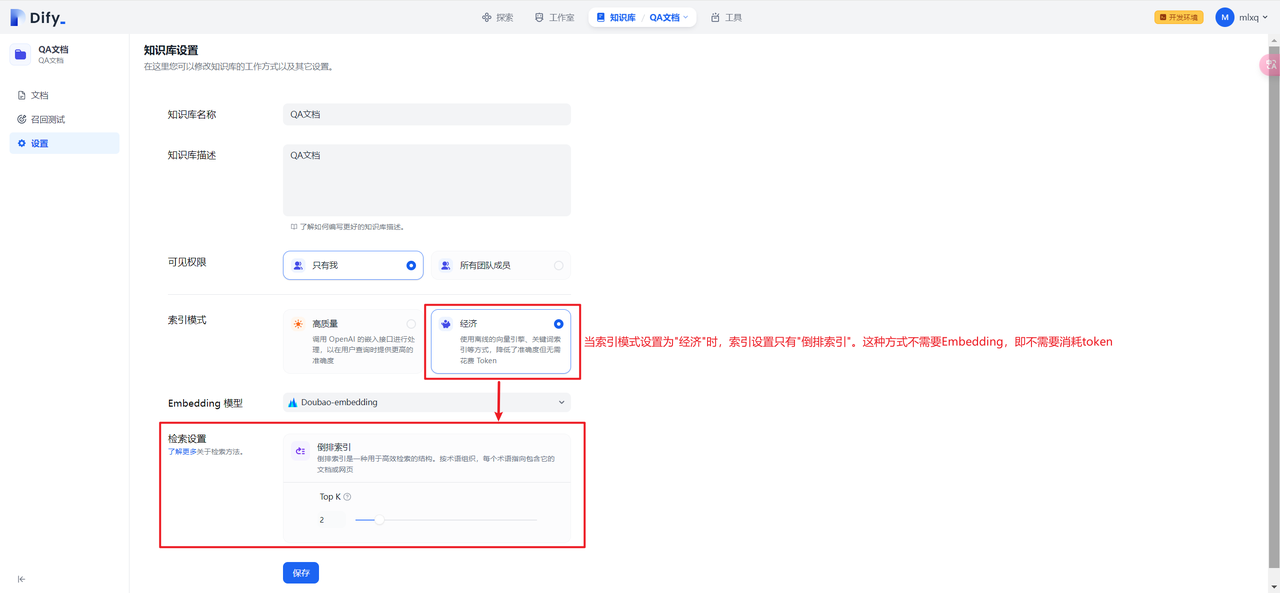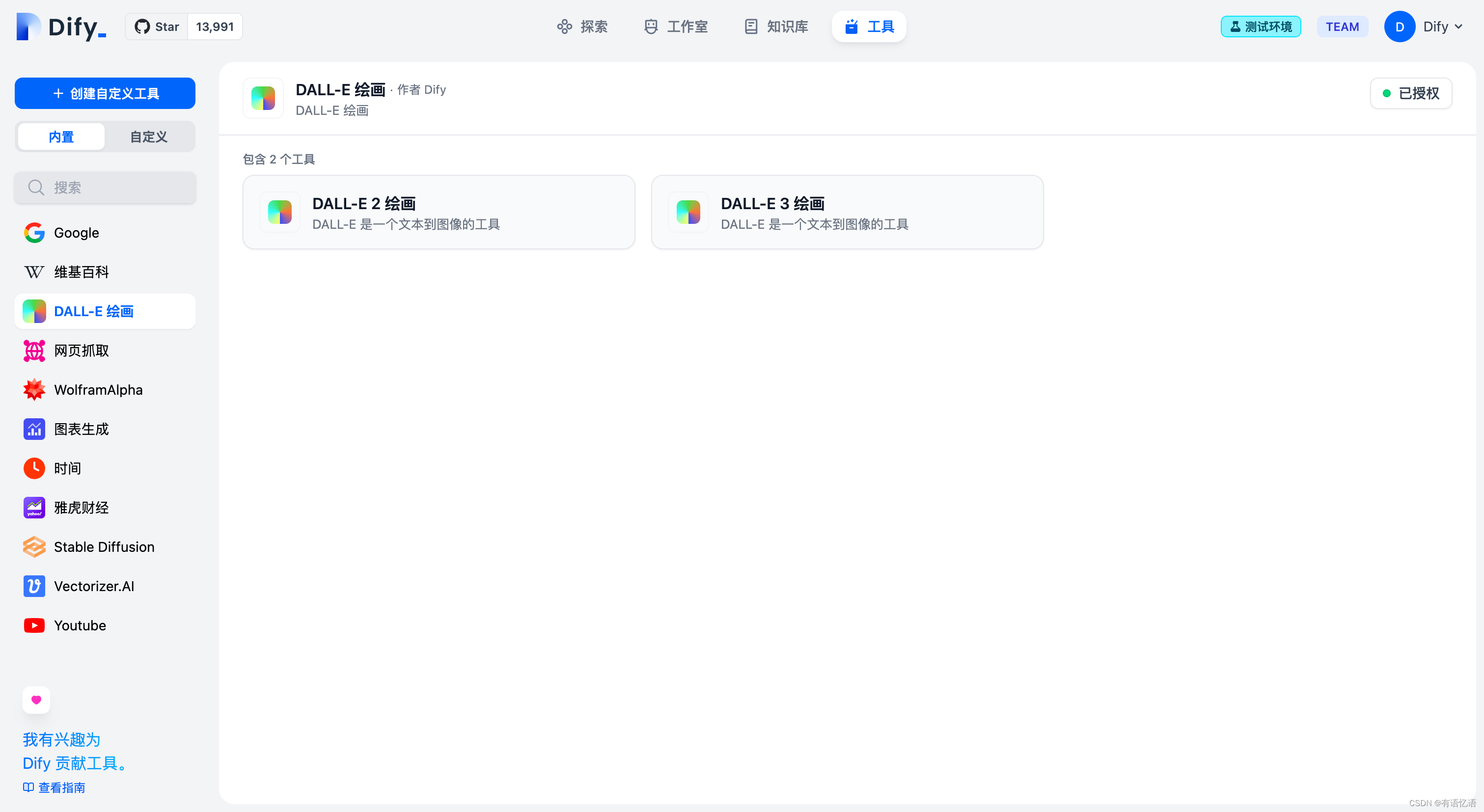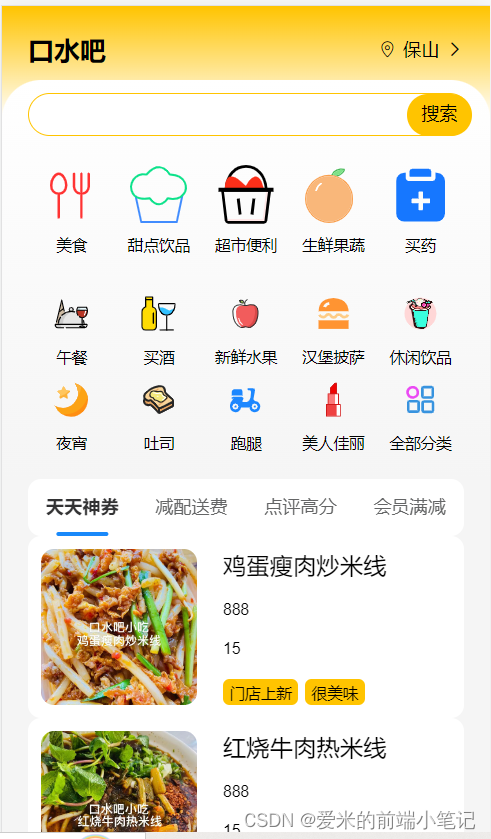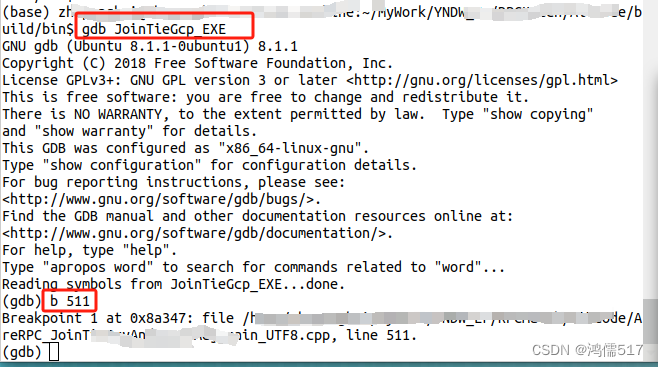Dify中的工具分为内置工具(硬编码)和第三方工具(OpenAPI Swagger/ChatGPT Plugin)。工具可被Workflow(工作流)和Agent使用,当然Workflow也可被发布为工具,这样Workflow(工作流)中又可以使用Workflow(工具)。
一.Dify内置工具

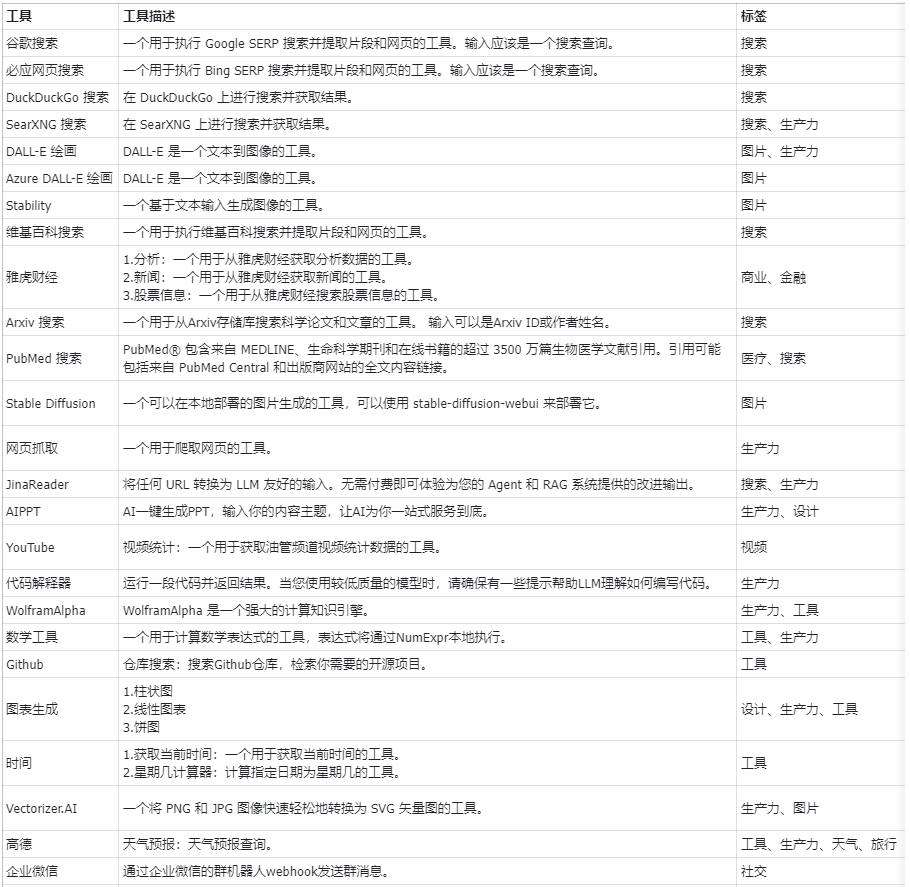
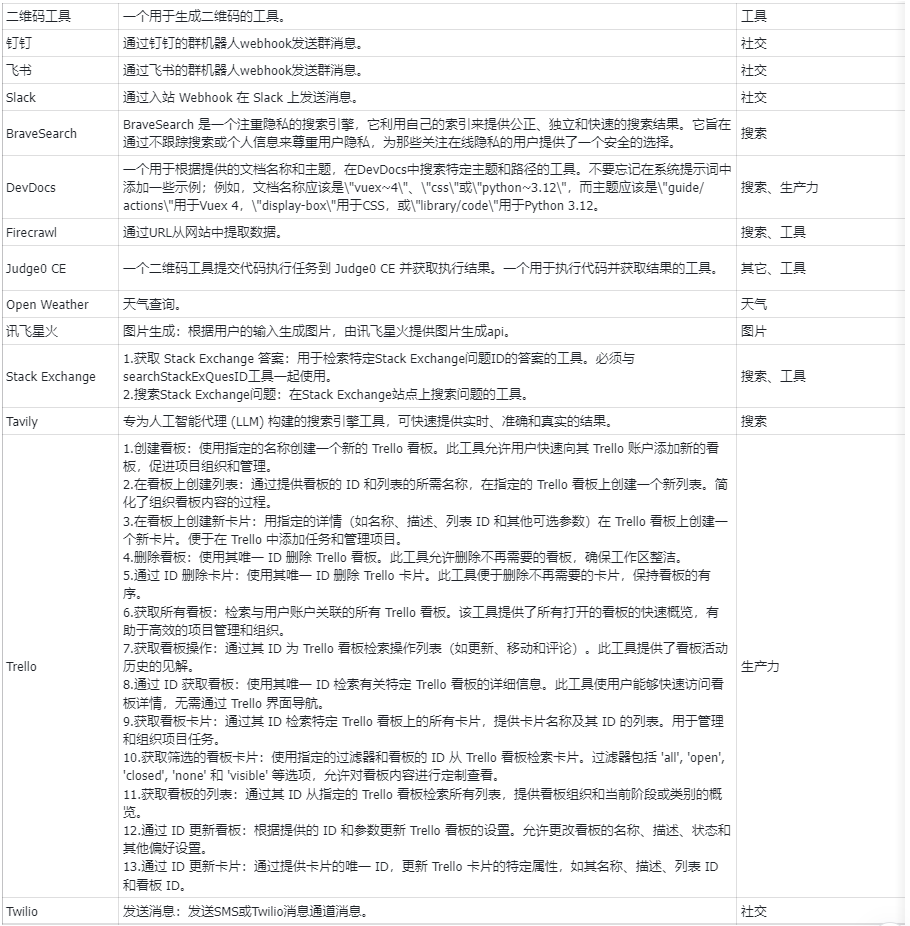
下面以Google为例介绍。从前端看只要输入SerpApi API key即可,接下来重点分析后端实现。
源码位置:dify-0.6.9/api/core/tools/provider/builtin/google
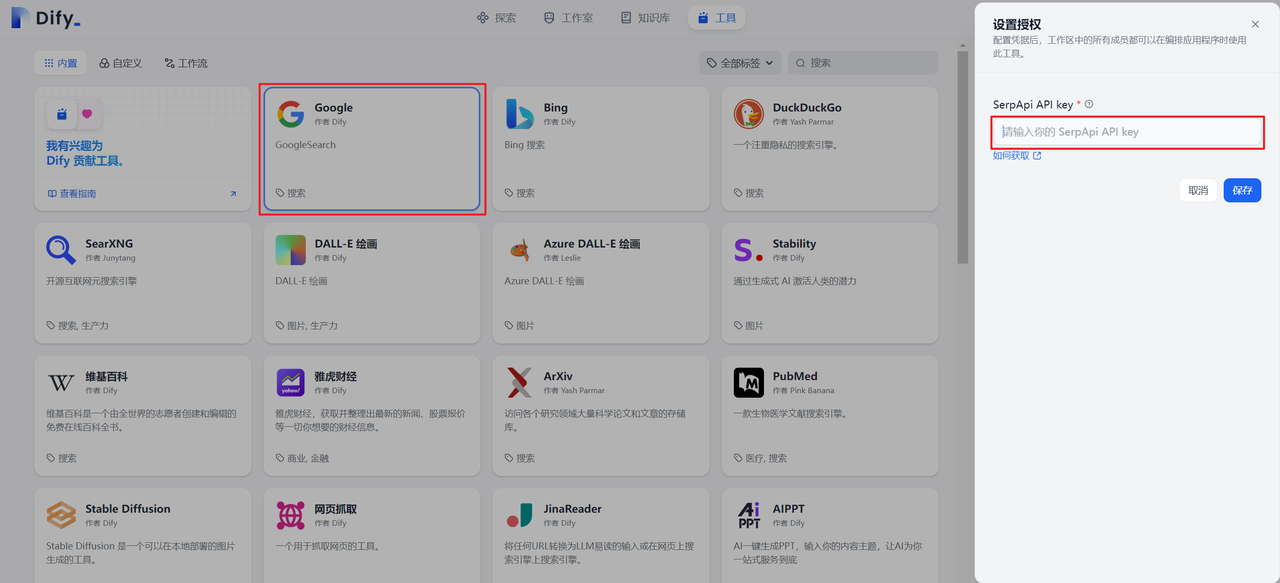
1.准备工具供应商 yaml
源码位置:dify-0.6.9/api/core/tools/provider/builtin/google/google.yaml
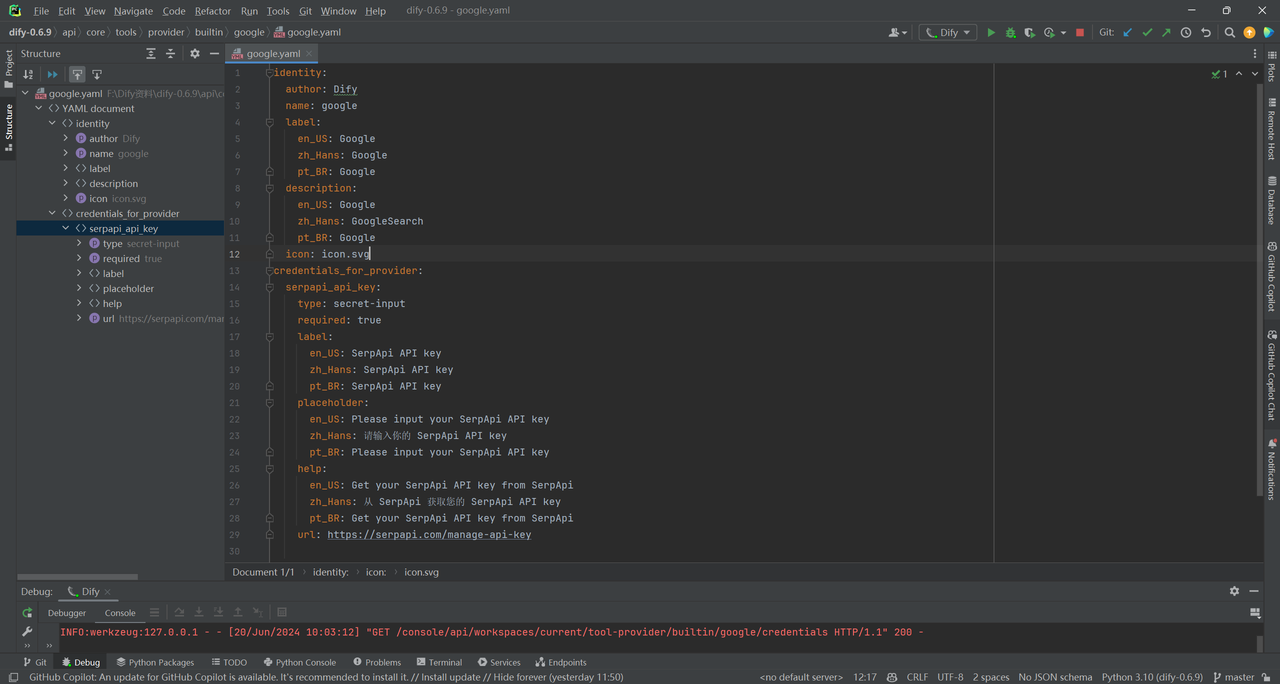
identity: # 工具供应商的基本信息
author: Dify # 作者
name: google # 工具供应商的名称,名称是唯一的,不允许和其它供应商重名
label: # 标签用于前端展示
en_US: Google # 英文标签
zh_Hans: Google # 简体中文标签
pt_BR: Google # 葡萄牙语标签
description: # 描述用于前端展示
en_US: Google # 英文描述
zh_Hans: GoogleSearch # 简体中文描述
pt_BR: Google # 葡萄牙语描述
icon: icon.svg # 图标文件名,图标文件需要放在当前模块的_assets目录下
2.准备供应商凭据
源码位置:dify-0.6.9/api/core/tools/provider/builtin/google/google.yaml
Google使用了SerpApi提供的API,而SerpApi需要一个API Key才能使用,即该工具需要一个凭证才能使用,也是前端需要输入SerpApi API key的原因。
credentials_for_provider: # 凭据字段
serpapi_api_key: # 凭据字段的唯一标识
type: secret-input # 凭据字段的类型
required: true # 是否必填
label: # 标签用于前端展示
en_US: SerpApi API key # 英文标签
zh_Hans: SerpApi API key # 简体中文标签
pt_BR: SerpApi API key # 葡萄牙语标签
placeholder: # 提示用于前端展示
en_US: Please input your SerpApi API key # 英文提示
zh_Hans: 请输入你的 SerpApi API key # 简体中文提示
pt_BR: Please input your SerpApi API key # 葡萄牙语提示
help: # 凭据字段帮助文本
en_US: Get your SerpApi API key from SerpApi # 英文帮助文本
zh_Hans: 从 SerpApi 获取您的 SerpApi API key # 简体中文帮助文本
pt_BR: Get your SerpApi API key from SerpApi # 葡萄牙语帮助文本
url: https://serpapi.com/manage-api-key # 凭据字段帮助链接
type:凭据字段类型,目前支持secret-input、text-input、select 三种类型,分别对应密码输入框、文本输入框、下拉框,如果为secret-input,则会在前端隐藏输入内容,并且后端会对输入内容进行加密。
3.准备工具 yaml
源码位置:dify-0.6.9\api\core\tools\provider\builtin\google\tools\google_search.yaml
一个供应商底下可以有多个工具,每个工具都需要一个 yaml 文件来描述,这个文件包含了工具的基本信息、参数、输出等。
identity: # 工具的基本信息
name: google_search # 工具的唯一名称
author: Dify # 工具的作者
label: # 工具的标签,用于前端展示
en_US: GoogleSearch # 英文标签
zh_Hans: 谷歌搜索 # 简体中文标签
pt_BR: GoogleSearch # 葡萄牙语标签
description: # 工具的描述
human: # 人类可读的描述
en_US: A tool for performing a Google SERP search and extracting snippets and webpages.Input should be a search query.
zh_Hans: 一个用于执行 Google SERP 搜索并提取片段和网页的工具。输入应该是一个搜索查询。
pt_BR: A tool for performing a Google SERP search and extracting snippets and webpages.Input should be a search query.
# 传递给 LLM 的介绍,为了使得LLM更好理解这个工具,我们建议在这里写上关于这个工具尽可能详细的信息,让 LLM 能够理解并使用这个工具
llm: A tool for performing a Google SERP search and extracting snippets and webpages.Input should be a search query.
parameters: # 参数列表
- name: query # 参数名称
type: string # 参数类型
required: true # 是否必填
label: # 参数标签
en_US: Query string # 英文标签
zh_Hans: 查询语句 # 简体中文标签
pt_BR: Query string # 葡萄牙语标签
human_description: # 参数描述,用于前端展示
en_US: used for searching # 英文描述
zh_Hans: 用于搜索网页内容 # 简体中文描述
pt_BR: used for searching # 葡萄牙语描述
# 传递给LLM的介绍,同上,为了使得LLM更好理解这个参数,我们建议在这里写上关于这个参数尽可能详细的信息,让LLM能够理解这个参数
llm_description: key words for searching
form: llm # 参数的表单类型,llm表示这个参数需要由Agent自行推理出来,前端将不会展示这个参数
- name: result_type # 参数名称
type: select # 参数类型
required: true # 是否必填
options: # 参数的选项
- value: text
label:
en_US: text
zh_Hans: 文本
pt_BR: texto
- value: link
label:
en_US: link
zh_Hans: 链接
pt_BR: link
default: link # 默认值为链接
label:
en_US: Result type
zh_Hans: 结果类型
pt_BR: Result type
human_description:
en_US: used for selecting the result type, text or link
zh_Hans: 用于选择结果类型,使用文本还是链接进行展示
pt_BR: used for selecting the result type, text or link
form: form # 参数的表单类型,form表示这个参数需要由用户在对话开始前在前端填写
identity字段是必须的,它包含了工具的基本信息,包括名称、作者、标签、描述等parameters参数列表name参数名称,唯一,不允许和其他参数重名type参数类型,目前支持string、number、boolean、select四种类型,分别对应字符串、数字、布尔值、下拉框required是否必填在
llm模式下,如果参数为必填,则会要求 Agent 必须要推理出这个参数在
form模式下,如果参数为必填,则会要求用户在对话开始前在前端填写这个参数
options参数选项在
llm模式下,Dify 会将所有选项传递给 LLM,LLM 可以根据这些选项进行推理在
form模式下,type为select时,前端会展示这些选项
default默认值label参数标签,用于前端展示human_description用于前端展示的介绍,支持多语言llm_description传递给 LLM 的介绍,为了使得 LLM 更好理解这个参数,我们建议在这里写上关于这个参数尽可能详细的信息,让 LLM 能够理解这个参数form表单类型,目前支持llm、form两种类型,分别对应 Agent 自行推理和前端填写
4.准备工具代码
源码位置:dify-0.6.9\api\core\tools\provider\builtin\google\tools\google_search.py
class GoogleSearchTool(BuiltinTool):
def _invoke(self,
user_id: str, # 表示用户ID
tool_parameters: dict[str, Any], # 表示工具参数
) -> Union[ToolInvokeMessage, list[ToolInvokeMessage]]: # 表示工具调用消息
"""
invoke tools
"""
query = tool_parameters['query'] # 表示查询
result_type = tool_parameters['result_type'] # 表示结果类型
api_key = self.runtime.credentials['serpapi_api_key'] # 表示API密钥
result = SerpAPI(api_key).run(query, result_type=result_type) # 表示运行查询
if result_type == 'text': # 表示结果类型为文本
return self.create_text_message(text=result) # 返回文本消息
return self.create_link_message(link=result) # 返回链接消息
5.准备供应商代码
源码位置:dify-0.6.9\api\core\tools\provider\builtin\google\google.py
class GoogleSearchTool(BuiltinTool):
def _invoke(self,
user_id: str, # 表示用户ID
tool_parameters: dict[str, Any], # 表示工具参数
) -> Union[ToolInvokeMessage, list[ToolInvokeMessage]]: # 表示工具调用消息
"""
invoke tools
"""
query = tool_parameters['query'] # 表示查询
result_type = tool_parameters['result_type'] # 表示结果类型
api_key = self.runtime.credentials['serpapi_api_key'] # 表示API密钥
result = SerpAPI(api_key).run(query, result_type=result_type) # 表示运行查询
if result_type == 'text': # 表示结果类型为文本
return self.create_text_message(text=result) # 返回文本消息
return self.create_link_message(link=result) # 返回链接消息
二.工具接口中的消息返回
1.返回消息类型
源码位置:dify-0.6.9\api\core\tools\tool\tool.py
Dify支持文本 链接 图片 文件BLOB 等多种消息类型,可通过以下几个接口返回不同类型的消息给 LLM 和用户。
def create_image_message(self, image: str, save_as: str = '') -> ToolInvokeMessage:
"""
create an image message
:param image: the url of the image
:return: the image message
"""
return ToolInvokeMessage(type=ToolInvokeMessage.MessageType.IMAGE,
message=image,
save_as=save_as)
def create_file_var_message(self, file_var: FileVar) -> ToolInvokeMessage:
return ToolInvokeMessage(type=ToolInvokeMessage.MessageType.FILE_VAR,
message='',
meta={
'file_var': file_var
},
save_as='')
def create_link_message(self, link: str, save_as: str = '') -> ToolInvokeMessage:
"""
create a link message
:param link: the url of the link
:return: the link message
"""
return ToolInvokeMessage(type=ToolInvokeMessage.MessageType.LINK,
message=link,
save_as=save_as)
def create_text_message(self, text: str, save_as: str = '') -> ToolInvokeMessage:
"""
create a text message
:param text: the text
:return: the text message
"""
return ToolInvokeMessage(type=ToolInvokeMessage.MessageType.TEXT,
message=text,
save_as=save_as
)
def create_blob_message(self, blob: bytes, meta: dict = None, save_as: str = '') -> ToolInvokeMessage:
"""
create a blob message
:param blob: the blob
:return: the blob message
"""
return ToolInvokeMessage(type=ToolInvokeMessage.MessageType.BLOB,
message=blob, meta=meta,
save_as=save_as
)
如果要返回文件的原始数据,如图片、音频、视频、PPT、Word、Excel 等,可以使用文件 BLOB。
blob文件的原始数据,bytes 类型。meta文件的元数据,如果知道该文件的类型,最好传递一个mime_type,否则Dify将使用octet/stream作为默认类型。比如:
# b64decode函数的作用是将一个Base64编码的字符串解码为原始的字节数据
self.create_blob_message(blob=b64decode(image.b64_json), meta={ 'mime_type': 'image/png' }, save_as=self.VARIABLE_KEY.IMAGE.value)
self.create_blob_message(blob=response.content, meta={'mime_type': 'image/svg+xml'})
application/octet-stream 是一种通用的二进制数据的 MIME 类型。“Octet” 是一个八位字节,“stream” 指的是数据流。这种类型通常用于表示未知的、二进制的数据。当下载或上传文件时,如果服务器或客户端不能确定文件的具体类型,就可能会使用 application/octet-stream。例如,当下载一个 .exe 文件或者 .zip 文件时,HTTP 响应的 Content-Type 头部字段可能就会被设置为 application/octet-stream。
2.总结和爬虫
还有2个常用的文本总结工具和网络爬虫工具如下:
源码位置:dify-0.6.9\api\core\tools\tool\builtin_tool.py
def summary(self, user_id: str, content: str) -> str:
max_tokens = self.get_max_tokens()
if self.get_prompt_tokens(prompt_messages=[
UserPromptMessage(content=content)
]) < max_tokens * 0.6:
return content
def get_prompt_tokens(content: str) -> int:
return self.get_prompt_tokens(prompt_messages=[
SystemPromptMessage(content=_SUMMARY_PROMPT),
UserPromptMessage(content=content)
])
def summarize(content: str) -> str:
summary = self.invoke_model(user_id=user_id, prompt_messages=[
SystemPromptMessage(content=_SUMMARY_PROMPT),
UserPromptMessage(content=content)
], stop=[])
return summary.message.content
lines = content.split('\n')
new_lines = []
# split long line into multiple lines
for i in range(len(lines)):
line = lines[i]
if not line.strip():
continue
if len(line) < max_tokens * 0.5:
new_lines.append(line)
elif get_prompt_tokens(line) > max_tokens * 0.7:
while get_prompt_tokens(line) > max_tokens * 0.7:
new_lines.append(line[:int(max_tokens * 0.5)])
line = line[int(max_tokens * 0.5):]
new_lines.append(line)
else:
new_lines.append(line)
# merge lines into messages with max tokens
messages: list[str] = []
for i in new_lines:
if len(messages) == 0:
messages.append(i)
else:
if len(messages[-1]) + len(i) < max_tokens * 0.5:
messages[-1] += i
if get_prompt_tokens(messages[-1] + i) > max_tokens * 0.7:
messages.append(i)
else:
messages[-1] += i
summaries = []
for i in range(len(messages)):
message = messages[i]
summary = summarize(message)
summaries.append(summary)
result = '\n'.join(summaries)
if self.get_prompt_tokens(prompt_messages=[
UserPromptMessage(content=result)
]) > max_tokens * 0.7:
return self.summary(user_id=user_id, content=result)
return result
def get_url(self, url: str, user_agent: str = None) -> str:
"""
get url
"""
return get_url(url, user_agent=user_agent)
3.变量池
简单理解变量池用于存储工具运行过程中产生的变量、文件等,这些变量可以在工具运行过程中被其它工具使用。以DallE3和Vectorizer.AI为例,介绍如何使用变量池。
DallE3是一个图片生成工具,它可以根据文本生成图片,将让DallE3生成一个咖啡厅的 Logo。Vectorizer.AI是一个矢量图转换工具,它可以将图片转换为矢量图,将DallE3生成的PNG图标转换为矢量图,从而可真正被设计师使用。
# DallE 消息返回
self.create_blob_message(blob=b64decode(image.b64_json), meta={ 'mime_type': 'image/png' }, save_as=self.VARIABLE_KEY.IMAGE.value)
# 从变量池中获取到之前 DallE 生成的图片
image_binary = self.get_variable_file(self.VARIABLE_KEY.IMAGE)
三.Dify第三方工具
创建自定义工具,目前支持 OpenAPI Swagger 和 ChatGPT Plugin 规范。可将 OpenAPI schema 内容直接粘贴或从 URL 内导入。工具目前支持两种鉴权方式:无鉴权 和 API Key。
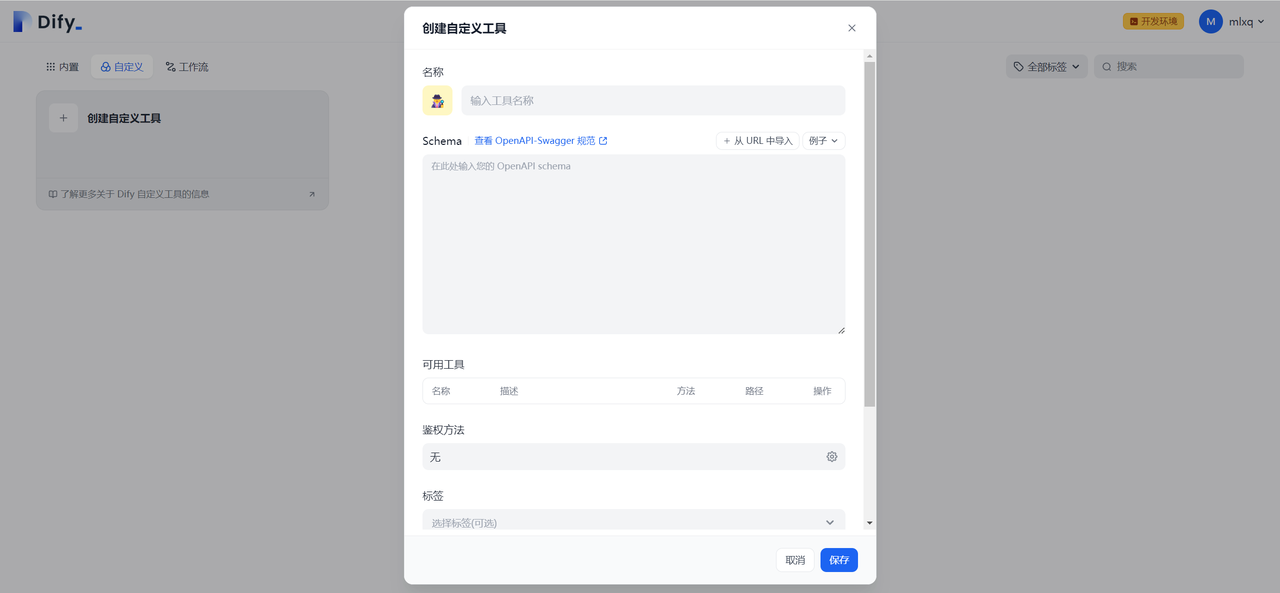
1.天气(JSON)
{
"openapi": "3.1.0",
"info": {
"title": "Get weather data",
"description": "Retrieves current weather data for a location.",
"version": "v1.0.0"
},
"servers": [
{
"url": "https://weather.example.com"
}
],
"paths": {
"/location": {
"get": {
"description": "Get temperature for a specific location",
"operationId": "GetCurrentWeather",
"parameters": [
{
"name": "location",
"in": "query",
"description": "The city and state to retrieve the weather for",
"required": true,
"schema": {
"type": "string"
}
}
],
"deprecated": false
}
}
},
"components": {
"schemas": {}
}
}
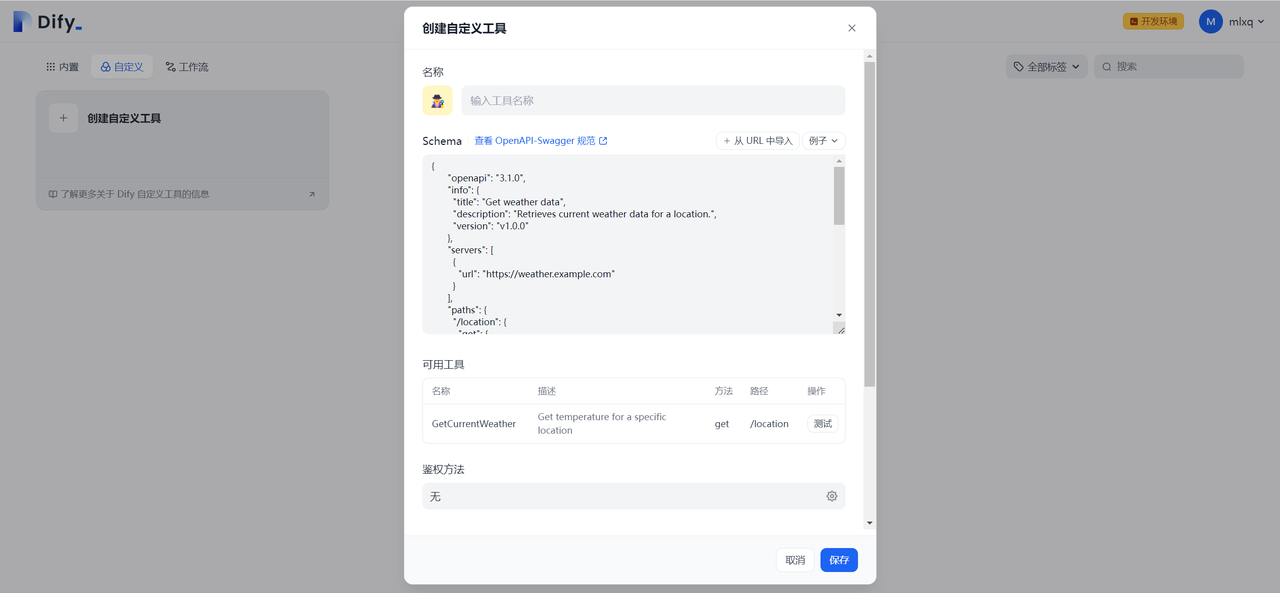
2.宠物商店(YAML)
# Taken from https://github.com/OAI/OpenAPI-Specification/blob/main/examples/v3.0/petstore.yaml
openapi: "3.0.0"
info:
version: 1.0.0
title: Swagger Petstore
license:
name: MIT
servers:
- url: https://petstore.swagger.io/v1
paths:
/pets:
get:
summary: List all pets
operationId: listPets
tags:
- pets
parameters:
- name: limit
in: query
description: How many items to return at one time (max 100)
required: false
schema:
type: integer
maximum: 100
format: int32
responses:
'200':
description: A paged array of pets
headers:
x-next:
description: A link to the next page of responses
schema:
type: string
content:
application/json:
schema:
$ref: "#/components/schemas/Pets"
default:
description: unexpected error
content:
application/json:
schema:
$ref: "#/components/schemas/Error"
post:
summary: Create a pet
operationId: createPets
tags:
- pets
responses:
'201':
description: Null response
default:
description: unexpected error
content:
application/json:
schema:
$ref: "#/components/schemas/Error"
/pets/{petId}:
get:
summary: Info for a specific pet
operationId: showPetById
tags:
- pets
parameters:
- name: petId
in: path
required: true
description: The id of the pet to retrieve
schema:
type: string
responses:
'200':
description: Expected response to a valid request
content:
application/json:
schema:
$ref: "#/components/schemas/Pet"
default:
description: unexpected error
content:
application/json:
schema:
$ref: "#/components/schemas/Error"
components:
schemas:
Pet:
type: object
required:
- id
- name
properties:
id:
type: integer
format: int64
name:
type: string
tag:
type: string
Pets:
type: array
maxItems: 100
items:
$ref: "#/components/schemas/Pet"
Error:
type: object
required:
- code
- message
properties:
code:
type: integer
format: int32
message:
type: string

3.空模板(JSON)
{
"openapi": "3.1.0",
"info": {
"title": "Untitled",
"description": "Your OpenAPI specification",
"version": "v1.0.0"
},
"servers": [
{
"url": ""
}
],
"paths": {},
"components": {
"schemas": {}
}
}

四.Cloudflare Workers
一个函数调用工具可以部署到Cloudflare Workers,并使用OpenAPI模式。其中,Cloudflare Workers是Cloudflare提供的一种在边缘网络运行JavaScript函数的服务。简单理解这是一个用于为dify应用创建工具的Cloudflare Worker。
# 克隆代码
git clone https://github.com/crazywoola/dify-tools-worker
# 开发模式
cp .wrangler.toml.example .wrangler.toml
npm install
npm run dev
# You will get a url like this: http://localhost:8787
# 部署模式
npm run deploy
# You will get a url like this: https://difytoolsworker.yourname.workers.dev
填写URL从URL中导入,如下所示:
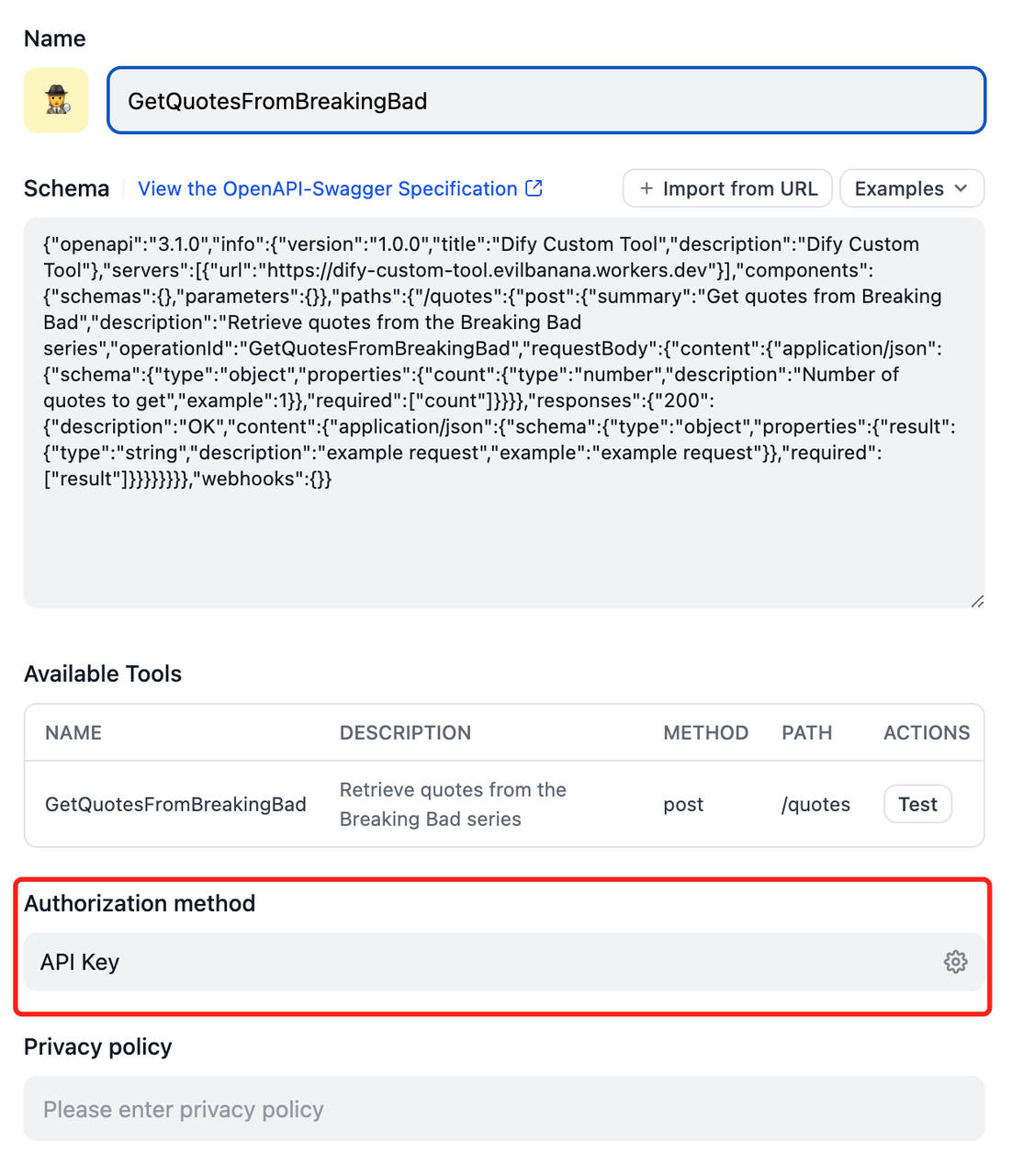
参考文献
[1] Tools:https://github.com/langgenius/dify/blob/main/api/core/tools/README_CN.md
[2] 快速接入Tool:https://github.com/langgenius/dify/blob/main/api/core/tools/docs/zh_Hans/tool_scale_out.md
[3] 高级接入Tool:https://github.com/langgenius/dify/blob/main/api/core/tools/docs/zh_Hans/advanced_scale_out.md
[4] OpenAPI Specification:https://swagger.io/specification/
[5] https://github.com/crazywoola/dify-tools-worker

